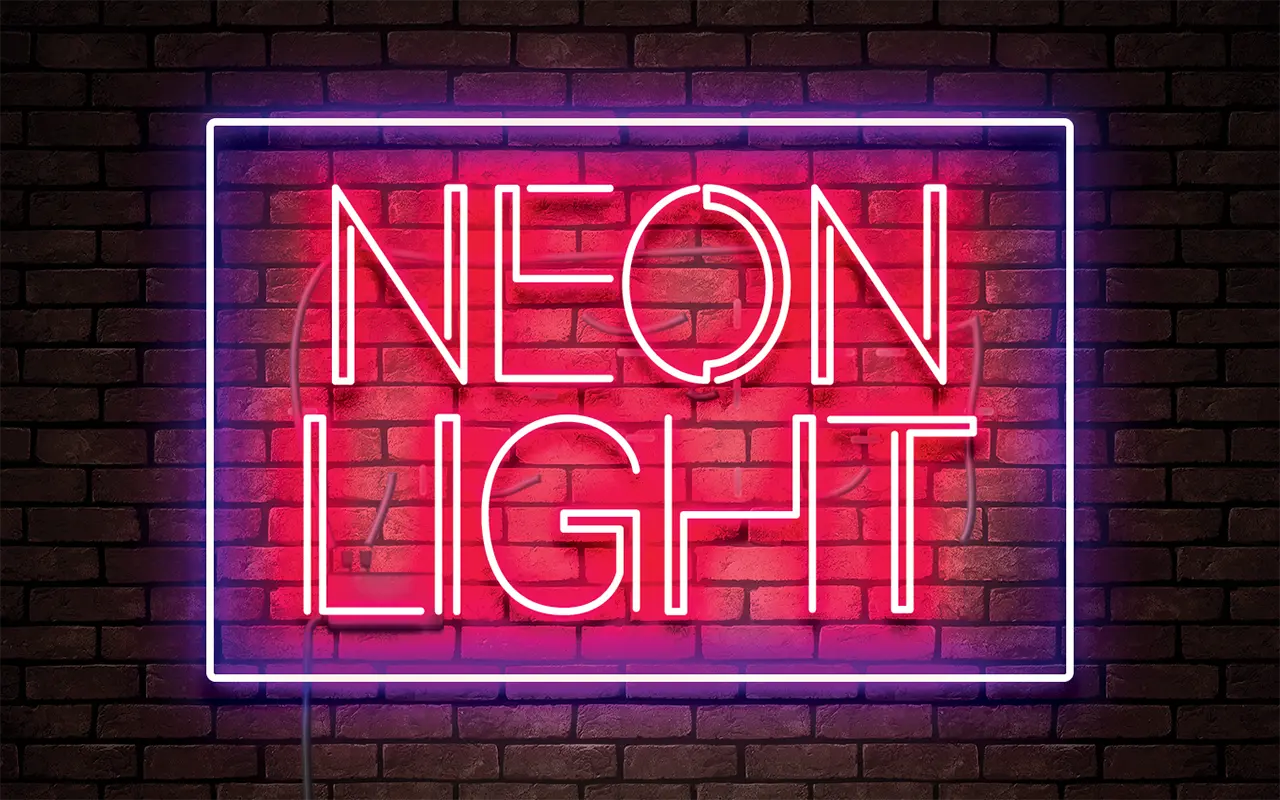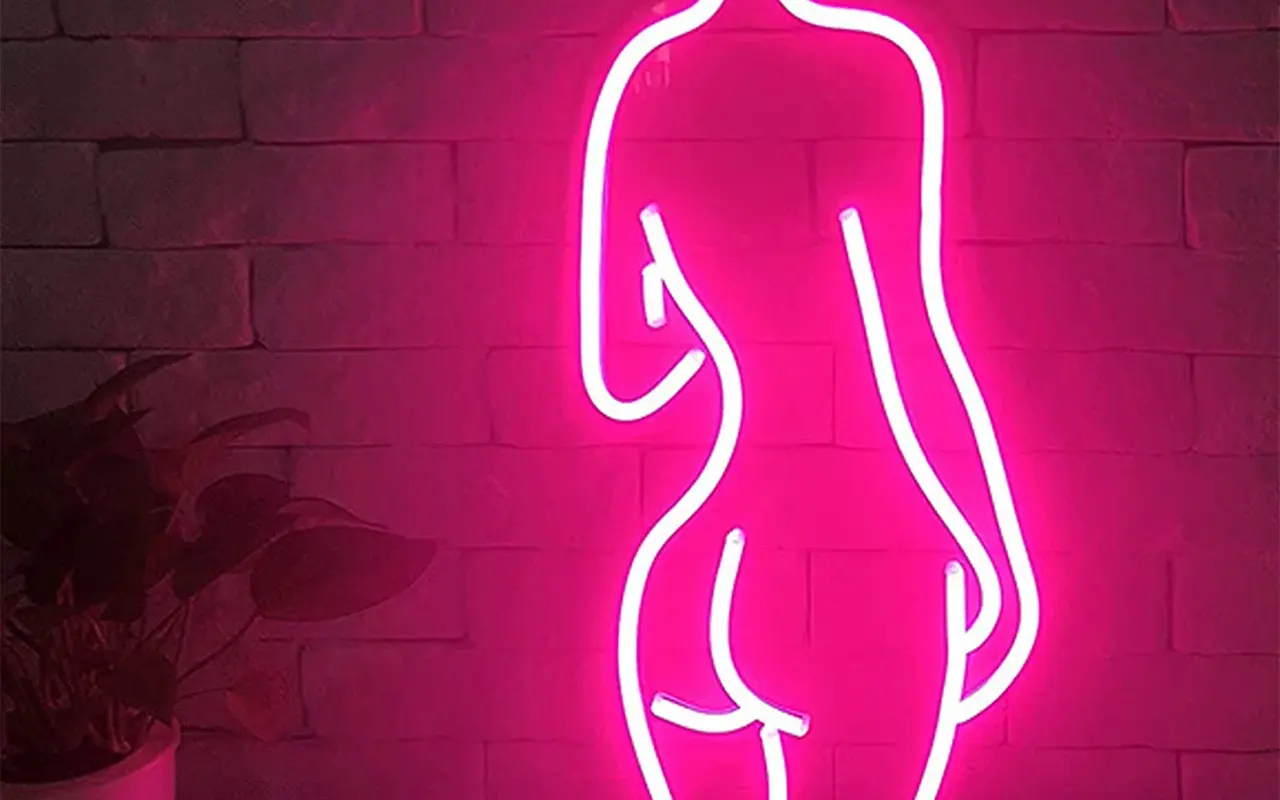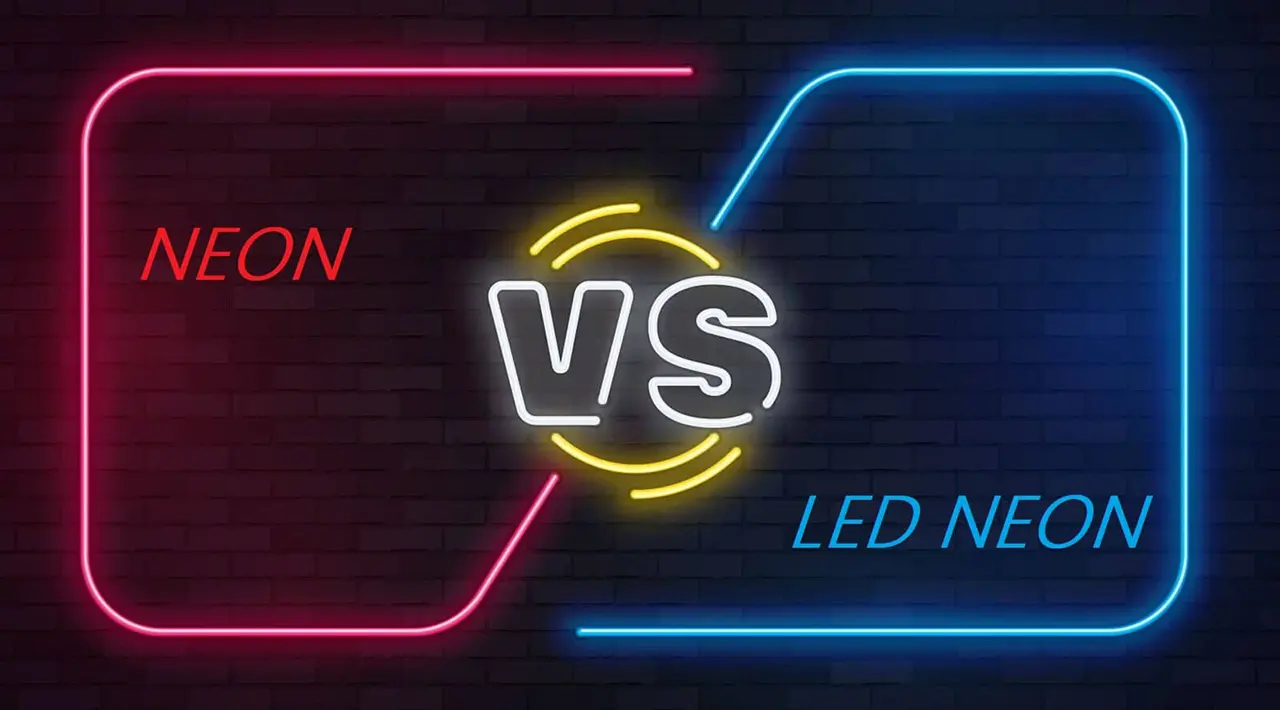Неон, який часто прославляють за його яскраву присутність у нічному небосхилі та популярній культурі, має набагато більше значення, ніж здається на перший погляд. Окрім неонових вогнів, цей газоподібний елемент може похвалитися багатою науковою історією та безліччю практичних застосувань. Заінтриговані? Вирушаючи в цю яскраву подорож, щоб дослідити "факти про неон" і дізнатися "цікаві факти про неон", ми зануримося в захоплююче поєднання науки, історії та мистецтва.
Чому неон має бути важливим для вас? Вся справа в захоплюючій взаємодії між його яскравим минулим, вражаючим сьогоденням і світлим майбутнім. Ця стаття створена для того, щоб запропонувати всебічний погляд, проливаючи блискучу ясність на інтригуючу історію неону. Приєднуйтесь до нас, щоб висвітлити багатогранність цього сяючого дива.
Що таке неон? Розкриваємо основи
Визначення та характеристики неону
Почнемо з основ. Неон, з символом Ne і атомним номером 10, - хімічний елемент, який належить до сімейства інертних газів у періодичній таблиці Менделєєва. При кімнатній температурі це безбарвний газ без запаху, який не утворює сполук з іншими елементами. Досить інертний, чи не так? Але ось де відбувається магія: пропустіть через нього електричний струм, і він перетворюється на захоплююче світлове видовище. Ця дихотомія між буденним фізичним станом неону та його електризуючим світінням зачаровує як науковців, так і митців.
Унікальні властивості неону дозволили йому зайняти незамінну нішу в різних галузях - від масштабної реклами до складних наукових приладів. Наприклад, низькі температури кипіння і плавлення роблять його безцінним у кріогенних системах. Тож, хоча спочатку неон може асоціюватися з яскравими білбордами, його корисність поширюється на такі різноманітні сфери, як аерокосмічна промисловість та охорона здоров'я.
Місце неону в Періодичній таблиці
Якщо ми подивимось на періодичну таблицю, то побачимо, що неон знаходиться в хорошій компанії, серед благородних газів, таких як гелій, аргон і криптон. Ці елементи називаються "благородними", тому що з хімічної точки зору вони відомі своєю ізольованістю; вони не вступають в реакції з іншими елементами. Неон є особливо дефіцитним на нашій планеті. Незважаючи на його відносну поширеність у Всесвіті, він складає мізерні 0,0018% земної атмосфери. Ця рідкість додає шар інтриги і зумовлює його цінність як візуального видовища та ресурсу для спеціалізованих наукових застосувань.
Ви можете запитати: "Чому неон такий рідкісний?". Причина в першу чергу геологічна: він не може бути легко вловлений в земній корі і часто потрапляє в атмосферу, звідки його важко видобути. Це обмеження робить неон цінним активом у багатьох галузях, включаючи наукові дослідження, медицину та декоративне освітлення.
Занурення в історію про неон
Відкриття неону
Уявіть, що це кінець 19-го століття, і ви по коліна занурені в розгадку таємниць стихій. Саме в такому світі опинилися сер Вільям Рамзі та Морріс М. Треверс. Займаючись фракційною дистиляцією рідкого повітря - процесом настільки ж трудомістким, як і звучить, - вони виділили газ, який відмовлявся вступати в реакцію з іншими елементами. Заінтриговані, вони досліджували далі і були винагороджені яскравим сяйвом. Йшов 1898 рік, і неон щойно відкрили. Названий від грецького слова "неос", що означає "новий", неон яскраво увійшов у наукову сферу.
Віхи історії неону
Перенесемося у 1910 рік, у Париж - світову столицю моди та дизайну і, як виявилося, ключовий момент в історії неону. Жорж Клод, французький інженер і винахідник, привернув до себе увагу на Паризькому автосалоні з першою в історії неоновою вивіскою. Це була не просто реклама, а видовище, яке ознаменувало нову еру у візуальному маркетингу. Бізнес усвідомив силу цього сяючого явища. Знак більше не просто передавав інформацію, він міг вражати уяву. Цей знаковий момент сформував рекламу та візуальну культуру на наступні роки.
Як неон змінив світ
Прийняття неону продовжилося і за межами Франції. Незабаром сяйво неонових вогнів, у переносному сенсі, запалало, змінивши міські пейзажі від нью-йоркської Таймс-сквер до токійського району Сібуя. Те, що починалося як рекламний інструмент, перетворилося на культурний ідентифікатор. Неон змінив естетику міст і став потужною формою візуальної комунікації. Освітлюючи фасади класичних театрів чи прикрашаючи інсталяції сучасного мистецтва, неонові вогні незабутньо трансформували міські та культурні ландшафти.
Наука, що стоїть за світінням неону
Збудження неонового газу
Отже, як неон створює це заворожливе сяйво? Вся справа в науці про збудження. Коли електричний струм протікає через герметичну трубку з неоновим газом, він збуджує атоми неону. Потім атоми вивільняють цю енергію у вигляді світлових фотонів, створюючи заворожуюче, майже гіпнотичне червонувато-оранжеве світіння. Це світіння не просто для галочки, це прояв того, що атоми неону повертаються до свого нормального стану після збудження.
Колірний спектр неону
Можливо, ви бачили неонове світло в запаморочливій палітрі кольорів і думали: "Ну, неон може бути будь-якого кольору". Це не зовсім так. Справжні неонові лампи випромінюють лише червонувато-оранжеве світло. Коли ви бачите неонові лампи різних кольорів, вони часто наповнені іншими благородними газами, такими як аргон, криптон або ксенон, або мають люмінофорне покриття, яке змінює колір. Термін "неонове світло" став загальним, але пуристи знають, що справжній неон світиться лише класичним червонувато-оранжевим відтінком.
Безпека та небезпеки
Хоча неон часто вважають безпечним через його інертність, важливо пам'ятати, що це все ж таки газ під тиском. Як і будь-який інший стиснений газ, він створює ризик задухи при неправильному поводженні. У високих концентраціях неон може витіснити повітря і знизити рівень кисню в обмеженому просторі, що потенційно може призвести до небезпечних для життя ситуацій. Тому, незалежно від того, чи ви любитель, який працює над проектом "зроби сам", чи професіонал у цій галузі, поводження з неоном вимагає певного рівня обережності та обізнаності, щоб зменшити ризики.
Цікаві факти та міфи про неон
Цікаві факти про неон, які вразять вас
Тримайте капелюхи, ентузіасти науки та допитливі уми, адже неон сповнений сюрпризів. Чи знали ви, що цей непримітний газ має в 40 разів більшу холодопродуктивність, ніж рідкий гелій? Саме так - неон використовується не лише для яскравих вивісок, але й у кріогенній техніці, для охолодження надпровідників та інших важливих наукових приладів. А як щодо його ролі у високовольтних індикаторах? Завдяки своєму добре помітному світінню неон слугує безшумною, але потужною системою оповіщення у високовольтному обладнанні, захищаючи як техніку, так і операторів від потенційної шкоди.
Розвінчання неонових міфів
Настав час звільнитися від стереотипів. Якщо ви думали, що неон - це виняткове надбання ретро-забігайлівок та казино Лас-Вегасу, подумайте ще раз. Неон вже багато років літає над нашими головами - в буквальному сенсі. В літаках, як компонент блискавковідводів, неон допомагає забезпечити безпеку польотів, відводячи електричні перенапруги від життєво важливого обладнання. Крім того, здатність неону протистояти суворим погодним умовам робить його ідеальним для зовнішніх вивісок, стійких до погодних умов, а не лише для яскравих вивісок, які ми звикли бачити. Давайте відкинемо уявлення про те, що неон призначений виключно для естетики; його функціональність лежить набагато глибше.
Як використовується неон? Від практичного до екстраординарного
Повсякденне використання неону
Ми взаємодіємо з неоном більше, ніж думаємо. Ви здивуєтеся, дізнавшись, що телевізор, який ви дивитеся, може містити неон у вакуумних трубках. Цей універсальний елемент - більше, ніж просто красиве обличчя; він служить нам у практичних цілях, які часто залишаються непоміченими. Наприклад, у медичній промисловості неон використовується як компонент у тестах легеневої дифузії і навіть як кріогенний холодоагент у певних сферах застосування. Але на цьому його застосування не обмежується. Будучи важливим елементом плазмових дисплеїв і лазерів, неон часто відіграє неоспівану роль у технологіях, які формують основу нашого повсякденного життя.
Неон у мистецтві та розвагах
Неон - вічна муза для художників та артистів. Якщо ви коли-небудь були на фестивалі Coachella або захоплювалися фільмом Рідлі Скотта "Той, що біжить по лезу", ви були свідками впливу неону на мистецтво та розваги. Його яскраві відтінки та захоплююче світло зробили його популярним серед сучасних художників, організаторів концертів та кінематографістів, додаючи райдужний шар до творчих пейзажів. Десятиліттями неон танцював у наших музичних кліпах, сяяв у наших мистецьких інсталяціях та засліплював у наших улюблених фантастичних епопеях. Його привабливість переходить через покоління і продовжує залишати свій сяючий слід у поп-культурі.
Економіка неону
Вартість неону
Коли ми говоримо про фінансові аспекти неону, важливо враховувати його рідкісність на Землі. Неон становить лише 0,0018% атмосфери Землі, тому його видобуток і переробка значно дорожчі порівняно з іншими елементами, наприклад, гелієм. Отже, його дефіцит часто робить його предметом розкоші, особливо в спеціалізованих наукових застосуваннях. Наприклад, висока вартість неону робить його використання у квантових обчисленнях і сучасній кріогенній техніці доступним лише для добре фінансованих дослідницьких інститутів або великих корпорацій. Розуміння економічних тонкощів неону може запропонувати розуміння того, чому його іноді приберігають для високих ставок.
Де купити неонову продукцію
Якщо ви шукаєте авангардні мистецькі інсталяції чи утилітарні неонові вивіски, спеціалізовані магазини та авторитетні онлайн-платформи завжди готові допомогти вам. Перевірені веб-сайти часто пропонують варіанти кастомізації, що полегшує бізнесу адаптацію неону до конкретних потреб брендингу. Для наукових застосувань спеціалізовані постачальники та компанії-постачальники хімічних речовин пропонують різні сорти неонового газу, як правило, запаяні в балони високого тиску. Ключовим моментом тут є вибір постачальника, який продає продукт і пропонує комплексну післяпродажну підтримку, враховуючи вимоги до поводження з неоном.
Неон крізь культури та епохи
Неон у поп-культурі
Яскраві відтінки неонового світла відіграють динамічну роль у поп-культурі, виходячи далеко за межі наукових лабораторій та рекламних білбордів. Вплив неону можна легко побачити в таких культурних явищах, як "Поліція Маямі", де він визначив цілу естетику. Його флуоресцентне сяйво також глибоко вплинуло на жанр кіберпанку, освітлюючи похмуре майбутнє, зображене у фільмах, відеоіграх та літературі. Ці знакові приклади зробили неон символічною репрезентацією певних культурних епох, передаючи як дух, так і візуальну мову різних епох.
Історичне та традиційне використання неону
Хоча неон легко сприймати як диво 20-го століття, його коріння сягає глибше. Вчені використовували неон у ранніх електричних експериментах, досліджуючи його провідні властивості та вивчаючи його потенціал у нових технологіях. Тим часом, у сфері візуального мистецтва, хоча неон, як ми знаємо, ще не існував, художники використовували матеріали, що імітували його світіння, такі як біолюмінесцентні пігменти, для створення візуально приголомшливих творів. Простеживши шлях неону від лабораторій минулих років до сучасних інсталяцій сьогодні, можна побачити, як цей елемент виходить за межі часу та застосування.
Поширені запитання про Neon
Чи небезпечний неон?
Хоча неон загалом безпечний, інертний газ, його властивості роблять його задушливою речовиною за певних умов. Уявіть, що ви перебуваєте в приміщенні, де концентрація неону надзвичайно висока. У цьому випадку небезпека полягає у здатності газу витісняти кисень. У таких ситуаціях може виникнути задуха. Тому при використанні неону, особливо в обмежених, погано вентильованих приміщеннях, дуже важливо дотримуватися стандартних правил безпеки. Пристрої моніторингу, які відстежують рівень кисню, можуть бути неоціненними в таких умовах. Висновок: неон не є небезпечним, але його неправильне використання або поводження з ним може потенційно призвести до ризиків для безпеки. Уявімо, що ви професіонал, який працює з неоном, або ентузіаст-любитель. У цьому випадку розуміння протоколів безпеки може убезпечити вас і тих, хто вас оточує.
Чому неон такий дорогий?
Висока вартість неону пояснюється насамперед його рідкістю та складними процесами, необхідними для його видобутку. Цей інертний газ є дуже рідкісним і становить лише близько 0,0018% атмосфери Землі. Зазвичай його отримують шляхом фракційної дистиляції зрідженого повітря. Цей процес не тільки складний, але й ресурсоємний. Додайте до цього той факт, що у неону не так багато замінників у найбільш критичних сферах застосування - наприклад, у високовольтних індикаторах - і ви отримаєте ресурс, який є настільки ж дорогим, наскільки і незамінним.
Чи можна повторити неонові кольори?
Всупереч поширеній думці, справжні неонові лампи світяться лише червонувато-оранжевим відтінком. Однак це не означає, що ви не можете досягти широкого спектру кольорів. Для цього використовують інші благородні гази, такі як аргон, криптон, а також ксенон або люмінофорні покриття на внутрішній стороні скляних трубок. Поєднуючи ці методи, можна досягти широкого спектру кольорів, що світяться, від яскравого синього до яскравого зеленого.
Які є унікальні способи використання неону?
Окрім яскравих і привабливих вивісок, які часто спадають на думку, застосування неону неймовірно універсальне. Наприклад, неон використовується у високовольтних індикаторах і вакуумних трубках. Його рідка форма має холодопродуктивність у 40 разів більшу, ніж у рідкого гелію, що робить його незамінним у специфічних наукових дослідженнях.
Яке значення має неон у поп-культурі?
Неон давно переплетений з поп-культурою, допомагаючи визначати візуальну естетику різних епох. Згадайте просякнуті неоном декорації у фільмах на кшталт "Той, що біжить по лезу" або барвисті інсталяції на фестивалях на кшталт Coachella. Неон оживляє світи кіберпанку, додає яскравості модним тенденціям і навіть знаходить свій шлях у сучасному мистецтві.
Чи є неон екологічно чистим?
Будучи інертним газом, неон не сприяє забрудненню повітря та глобальному потеплінню. Однак енергія, яка використовується для освітлення неонової вивіски, може мати вплив на навколишнє середовище, залежно від джерела електроенергії. Перехід на енергоефективні джерела живлення може зробити використання неону більш екологічним.
Як придбати неонові вивіски або продукцію?
Найкраще купувати неонову продукцію в спеціалізованих магазинах, що спеціалізуються на світлових рішеннях або художніх інсталяціях. Онлайн-платформи також пропонують безліч варіантів. Пам'ятайте, що якість і ціна можуть сильно відрізнятися, тому дуже важливо провести власне дослідження.
Чи можна використовувати неон у медицині?
Так, неон знайшов застосування в медицині, зокрема в методах кріогенного заморожування та деяких лазерних технологіях. Його унікальні властивості роблять його ресурсом у нішевих медичних процедурах і діагностичних методиках.
Як неон змінив світ реклами?
Поява неонових вивісок на початку 20-го століття зробила революцію в рекламі. Перша неонова вивіска, продемонстрована на Паризькому автосалоні 1910 року, привернула миттєву увагу і незабаром стала основою зовнішньої реклами, пропонуючи новий спосіб привернути увагу споживачів.
Яка історія неону?
Хоча неон був відкритий у 1898 році сером Вільямом Рамзі та Моррісом М. Треверсом, він привернув до себе увагу лише після того, як було реалізовано його комерційне застосування. З часу свого відкриття неон зазнав кількох трансформацій та інновацій, увійшовши як у наукові дослідження, так і в візуальне мистецтво.
Висновок
Завершуючи цей вичерпний посібник про неон, ми хочемо нагадати, що цей елемент виходить далеко за межі своєї привабливої яскравості. Неон слугує наріжним каменем у різних галузях - чи то в сліпучих вітринах Вегасу, чи то в надточних середовищах лабораторій квантових обчислень. Його багата історія, позначена науковими проривами і культурними впливами, підкреслює його незмінну привабливість і незамінну роль у сучасному суспільстві. Незалежно від того, чи зачаровують нас його яскраві відтінки в сучасному мистецтві, чи інтригують практичні застосування, універсальна природа неону гарантує, що він продовжуватиме зачаровувати і служитиме людству новими способами ще довгі роки.
Майбутнє таке ж яскраве, як і самі вогні у захоплюючому неоновому світі. Якщо ви хочете привнести цю світлову магію у своє життя, зверніть увагу на Юнітоп-Китай лідирує Світлодіодні стрічкові світильники і Світлодіодний неоновий флекс виробник. Маючи безпрецедентний досвід у світлодіодній індустрії, Unitop - це ваше джерело якості та інновацій. У вас є питання або конкретні вимоги? Не соромтеся звертатися до зверніться до нас негайно. Ваше світле майбутнє чекає з Unitop.
Схожі статті

Зараз Том є менеджером з продажу в Unitop (China) Co., Limited. Він був у Світлодіодне освітлення з 2005 року. Він є експертом у сфері продажів та маркетингу, а також в управлінні заводом. Захоплюється бодібілдингом, а ще він шалений фанат Apple! Він працьовитий хлопець, любить вчитися і пробувати щось нове.
Електронна пошта: tom@unitopledstrip.com Ватсап: +86-18680307140







Залишити відгук
Хочете приєднатися до дискусії?Не соромтеся робити свій внесок!